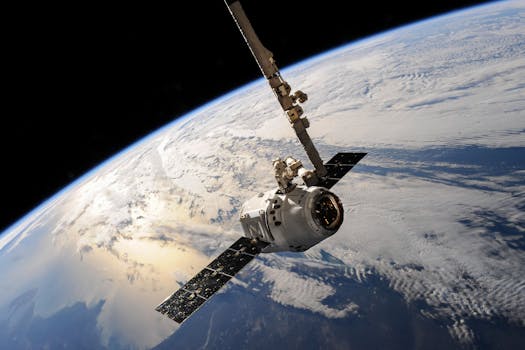
The Future of Satellites: Revolutionizing Global Connectivity
The future of satellites is a topic of great interest and importance, as these space-based systems play a crucial role in enabling global connectivity, navigation, and remote sensing capabilities. With the rapid advancement of technology, satellites are becoming increasingly sophisticated, allowing for faster and more reliable communication, navigation, and data collection. In this article, we will explore the future of satellites and how they are poised to revolutionize global connectivity.
The future of satellites begins with the Focus Keyword: Future of Satellites and the current state of satellite technology. Satellites have been in use for several decades, with the first satellite, Sputnik, launched by the Soviet Union in 1957. Since then, thousands of satellites have been launched into space, providing a wide range of services, including communication, navigation, and remote sensing. However, the current state of satellite technology is limited by the available bandwidth, latency, and cost of launching and operating satellites.
Advancements in Satellite Technology
Several advancements in satellite technology are expected to revolutionize the future of satellites. One of the most significant advancements is the development of small satellites, also known as smallsats. Smallsats are smaller, lighter, and less expensive than traditional satellites, making them more accessible to a wider range of organizations and individuals. Smallsats are also more agile and can be launched into space more quickly, allowing for faster deployment and testing of new technologies.
Another significant advancement is the development of constellations of satellites. Constellations are networks of satellites that work together to provide global coverage and connectivity. These constellations are expected to provide faster and more reliable communication, navigation, and data collection capabilities. Companies such as SpaceX, Amazon, and OneWeb are already launching constellations of satellites, with thousands of satellites expected to be in orbit in the coming years.
Applications of Satellites
Satellites have a wide range of applications, including communication, navigation, remote sensing, and space exploration. Communication satellites provide internet connectivity, voice and data services, and television broadcasting. Navigation satellites, such as GPS, provide location information and timing signals. Remote sensing satellites collect data on the environment, climate, and natural resources. Space exploration satellites are used to study the universe, including planets, stars, and galaxies.
The future of satellites is expected to enable new applications and services, such as internet of things (IoT), autonomous vehicles, and smart cities. Satellites will provide the connectivity and data collection capabilities needed to support these applications, enabling faster and more reliable communication, navigation, and data collection.
Challenges and Opportunities
Despite the many advantages of satellites, there are also challenges and opportunities that must be addressed. One of the biggest challenges is the regulation of satellite launches and operations. As the number of satellites in orbit increases, there is a growing need for regulations to ensure the safe and responsible use of space. Another challenge is the mitigation of space debris, which can pose a threat to operational satellites and the environment.
There are also opportunities for innovation and investment in the satellite industry. The development of new technologies, such as quantum computing and artificial intelligence, is expected to enable new applications and services. The growth of the satellite industry is also expected to create new jobs and opportunities for economic development.
